The 33
 for a disaster sequence and some language.
for a disaster sequence and some language.
Reviewed by: Shawna Ellis
CONTRIBUTOR
| Moral Rating: | Better than Average |
| Moviemaking Quality: |
|
| Primary Audience: | Adults Teens |
| Genre: | Drama |
| Length: | 2 hr. 7 min. |
| Year of Release: | 2015 |
| USA Release: |
November 13, 2015 (wide—2,400+ theaters) DVD: February 16, 2016 |
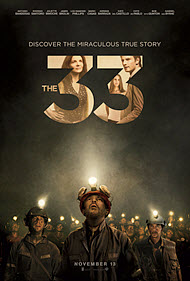



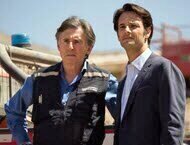
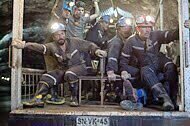
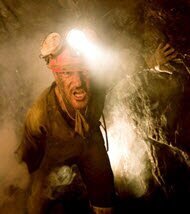

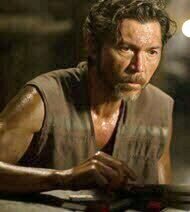

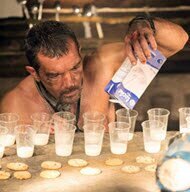

FEAR, Anxiety and Worry—What does the Bible say? Answer
how to maintain hope under terrible circumstances
mines in the Bible
| Featuring |
|---|
|
Antonio Banderas … Mario Sepúlveda James Brolin … Jeff Hart Juliette Binoche … Dr. Ouelet … María Segovia Lou Diamond Phillips … Luis Urzua ‘Don Lucho’ Rodrigo Santoro … Laurence Golborne Naomi Scott … Escarlette Sepúlveda See all » |
| Director |
| Patricia Riggen — “Girl in Progress” (2012), “Under the Same Moon” (2007) |
| Producer |
|
Alcon Entertainment Dynamo See all » |
| Distributor |
In 2010, the attention of the world turned to a collapsed copper and gold mine in Copiapó, Chile. Television viewers were riveted as the rescue unfolded. This film attempts to capture the tension, the drama, and the human story of these men, their families, and their rescuers. I must make the assumption that those who are reading this review are at least aware of its widely known ultimate outcome and would not consider such information to be a “spoiler.”
I have heard that an estimated 1 billion people watched the culmination of the Chilean mining rescue. I have to admit that I was not among them. Having no television and no newspaper, I only learned of the situation long after the disaster occurred… and then the information I received was limited to snippets of conversation overheard here and there. I still remember the excitement of my family members as they rejoiced over the rescue of the men.
Having seen virtually no real-time video of this event as it unfolded, I decided to watch some documentary footage of the rescue before viewing this movie. I wish that I had not done so, as I think I would have enjoyed the film more if I did not already have images and incidents in my mind which the movie simply could not equal. The filmmakers have undertaken an almost impossible task… to tell the stories of the 33 miners, their families, and their rescuers in a 2 hour film. It is almost too much scope to encompass in one film, and for this reason falls short of the drama I had expected. I am one who cries easily (I wept openly while watching the real video footage), but while seeing these same events portrayed on film I was much less moved. It simply could not capture the raw emotion of the actual events, but this by no means should imply that the film is not worth watching. I applaud their efforts to attempt the task, even if the execution is somehow lacking. This film feels less like a dramatic tale of survival and a bit more like something from the “disaster film” genera.
The movie opens with a heavily foreshadowed introduction of various miners and their families, showing them as they attend a party and then as they prepare for their shift and actually enter the doomed mine. The actual collapse sequence is well-executed, very tense and frightening. As the grim reality of the situation unfolds, the viewer almost inevitably wonders how he or she would react in this same circumstance… as a miner? As a family member? As a rescuer who is charged with saving the lives of these men against seemingly insurmountable odds?
What follows is an account of the days afterward, changing in perspective between government officials, brief glimpses of news coverage, the waiting family members in Camp Hope, and, of course, the trapped miners. Although it was necessary to show these different perspectives, something about the timing and the way in which it was done felt rather disjointed to me, as if I was being jerked from one scene to another. I am reminded of the film “Apollo 13,” which had to follow a similar formula but which somehow did not feel this way. But, of course, “Apollo 13” had only to show a period of several days and not more than two months. It must have been difficult indeed for the filmmakers to decide how to pace “The 33” to show the most important events of 69 days from these multiple perspectives while still keeping a reasonable pace. At times, I was confused by what they chose to show, and by what they left out. It must be difficult to tell a story that so many people already know.
Fittingly, there is a palpable sense of tension during the entire movie. Somehow this is maintained even though the viewer is (most likely) already aware of the outcome of the rescue efforts. One could find it easy to slip into despair along with the characters in their dark and grim surroundings. Thankfully, the desperation is frequently countered with hope. Various characters buoy each other up with comforting words and actions.
Antonio Banderas portrays the most famous of the miners, Mario Sepúlveda, as a man full of hope and drive who unofficially leads the men by being the one to take action when needed. He is often seen speaking words of encouragement to the other miners and attempting to spur them on to do the right thing, even while struggling with his role as a leader and with the fame he finds as the “face” of the trapped miners. I was not sure what to expect from Banderas, but he portrays Sepúlveda as a believable and sympathetic character. Yet, even with this central character who has so much of the screen time, I felt that there was not ample time to get to know him. And how much less so with the other miners and their family members who have considerably less screen time and dialog!
Of course, the other miners have their own stories and personalities, but there is so much going on that we do not get far below the surface with any of them. There is the shift foreman who feels a great weight of responsibility for his workers, the young expectant father who almost loses hope, the older man just weeks from retirement, an alcoholic struggling with forgiveness, a man known as “the Pastor” who prays for and encourages the men, a Bolivian man who is new to the mine and faces racism, an adulterer who knows that two women are fighting over him on the surface, and others whose stories we do not learn.
Above ground, we find anxious family members in varying degrees of distress and hopefulness in the growing encampment around the mine. Some are rallying for action, others are just waiting. There are brief glimpses into the political side of the drama, following the Chilean president and his aides as they seek to avoid a widely publicized disaster. Of particular note is the Minister of Mining, Laurence Golborne, who is portrayed wonderfully by Rodrigo Santoro. I believe that he had the strongest performance in the entire film, as he seeks to relieve tension between the families and the rescuers. His haunted, sleepless eyes show his heavy burden to bring the men out alive.
With 33 men and then also the family members and rescue leaders, it would be impossible to delve too deeply into any certain individuals. Unfortunately, this leaves the movie feeling rather shallow compared to most “true life” survival films, for there is obviously so much more we could know about these people which we simply can’t learn because of time limitations. I felt as if I was watching brief vignettes and did not get to know anyone very intimately, but the actors portrayed their characters as well as they could, I believe.
This movie is described by its distributors as portraying “the power of prayer as the miners depended on their deep personal faith and relationship with God to sustain them through their ordeal.” Because of this description and the source material, which is full of stories giving glory to God, I had high hopes for this “deep personal faith” to be emphasized. Unfortunately, it seems that Hollywood is not quite sure how to show “deep personal faith” in such a way that unabashedly gives all glory to God. Characters were occasionally seen praying, and there was much Catholic imagery shown in Camp Hope (especially during one night-time prayer service), but there was far less mention of or reliance upon God among the trapped miners in the movie than was reported from the actual incident.
One exception is Marco Treviño as miner José Henríquez, known by the others as “the Pastor.” He is seen praying, lifting up the name of Jesus and addressing a loving Father in a way that seems natural and unforced. In one touching scene, he comforts and prays with a despairing character who feels unlovable and unwanted. I wish that there had been more time with “the Pastor” and that we could have heard his messages and prayers among the miners, as the real life José Henríquez claimed later that 22 of the miners placed their trust fully in Christ during the ordeal. In interviews I had seen online, some of the miners said they went down in that hole with dead religion and came up again truly knowing God.
Although I did not expect to see actual conversions portrayed in a secular film, it was still disappointing. There is some acknowledgment that God’s hand was on these men, such as a message scrawled on the wall of the mine which reads, “God was with us.” But there was the possibility of so much more in this area… especially after the filmmakers had claimed in their description that this movie would highlight faith. I would say that instead of true faith, the movie emphasized the need for continued hope of rescue. The final result is an inspiring story, but not one that I would say had much of its focus on a deep relationship with God as helper and sustainer.
Language is moderate, but not pervasive. There are several uses of expletives, usually in extreme situations, peril or frustration (s-word, a**, damn, hell, cr*p). Crude terms are used when talking about one man’s mistress. I believe that God’s name was misused—one OMG, a “My God” and a very garbled GD). I was thankful that the language was not more extreme than it was (no F-word), but it was still enough for caution.
Racial prejudice is present. One of the miners is Bolivian, and is mocked and even falsely accused of theft because “all Bolivians are thieves.” It is joked by some that if the miners must resort to cannibalism, they will eat him first because “Bolivians taste like chicken.”
Sexual content is mild. A husband playfully grabs his wife’s clothed rear and tells her how much he loves it. Husbands and wives embrace and briefly kiss. A television in the mining office appears to be playing what may be a risqué program in the background. One woman pulls down the skirt of another in a non-sexual way played for humor. In a brief dreamlike sequence in which the miners are envisioning women serving them rich foods, a couple of the women are wearing revealing clothing. Two men are seen urinating from behind (nothing shown). Many of the miners are often shirtless, as it is a hot and humid environment in the mine.
Violence is moderate. Most of this comes from the perils of the mine collapse, with some injuries and blood shown. The collapse scene is very intense as the miners try to flee on trucks. A vehicle crashes and the impact is shown. A wife and a mistress fight cattily over an adulterous man. An altercation between waiting family members and guards leads to rock-throwing and the brandishing of guns. An angry woman slaps a government official. Miners argue heatedly and fight at times. A knife is placed threateningly against a man’s throat.
There are other areas of concern. One man is an alcoholic and is seen drinking and having extreme withdrawal symptoms. Several miners are shown smoking. Some of the miners are in despair, and one man contemplates suicide. A man is seen thirstily drinking what appears to be contaminated water. Miners suffer from lack of food. One woman performs a brief ceremony for a drill rig operator by sprinkling him with a liquid and asking “all the gods” to have favor on him. There is much tension between various leaders, sometimes leading to heated arguments or rebellion against authority.
There is much recurring talk of one man’s infidelity. He blatantly has a mistress who is aware that the man is married. This man suggests that others also have “something on the side,” and that his position of having two women competing for him is enviable. The adulterous affair is often played for laughs and not for the tragedy that it is. My heart fell as I heard other moviegoers laughing at the “funny situation” this man found himself in. Although this is a true aspect of the story, it is trivialized and also portrayed in such a way that the viewer sympathizes with the mistress and not the betrayed wife. I found this to be the most objectionable aspect of the film.
Cinematically, the film is well-executed, with stunning wide visuals of the starkly beautiful Atacama Desert contrasted by the close, grim tunnels of the mine. The mine interior is dark and forboding, but not so dim as to obscure detail and obliterate features as happens in some movies set in dark places. The use of head lamps to show what the miners see is effective, and the constant grime and dirt of the place make it seem very real and also very miserable. The rescue scenes with machinery and drilling rigs and the scale and color of Camp Hope are believable.
I wish that I had taken more notice of the musical score, since it is one of the last written by James Horner. Often, the dramatic music is permeated with strains of Chilean instruments and rhythms, which is effective in reminding us of the place.
Some viewers may disagree with the choice to use English as the primary language in the film. I found it odd that although the filmmakers chose to use Spanish wording on various signs throughout the movie, for some reason they decided to change the handwriting on the famous first contact note from Spanish “Estamos bien en refugio, los 33” to English, which was very distracting, for me. The iconic note is so familiar to most viewers that it seems strange to have altered it in this way.
Other events are dramatized or changed to better fit the story and time frame, including some of the technical details of the rescue and the order and manner of the emergence of the men in the capsule. This is commonplace in movies “based on true events,” but some of the changes seemed unbelievable, unnecessary, and less effective than if the actual events were shown as they happened.
As I was watching the film, over and over again my mind thought of the sadness of the plight of the trapped miners. The helplessness, the suffocating misery of heat and dirt, the separation from light and family. All of this came about in one disastrous moment, unexpectedly, on just a normal day. Oh, there were warnings of the impending disaster, but these were ignored. We can all acknowledge how terrible that is… that is why the world was captivated by their story and was fervently hoping for their rescue. Viewers caught a glimpse of their dark underground world and their haunted eyes through fuzzy video footage and were moved with compassion for them.
But how this all pales in comparison to the future fate of so many who die each and every day! Over 150,000 people die each day, many of whom do not truly know Christ and who will eventually be lost forever in a place much worse than the desolate, stinking hot mine portrayed in this movie. Instead of a mere 69 days, those who die without Christ will suffer helplessness forever, misery forever, separation forever… with no hope of rescue. To read the descriptions of hell in the Bible is to shudder in horror for those who will go there and to thank God that He sent His Son to make a way of escape!
And yet the world is not concerned. Many who call themselves Christians are not moved with compassion. Even those of us who believe in the reality of hell do not show the perishing millions the same regard and concern as we did these 33 men in 2010. Why? Is it because reaching the vast number of the lost seems too insurmountable? Or because we do not want to take the time? Because we are too busy? How shocked and affronted the world would have been if the Chilean government had never even attempted a rescue because of these same reasonings. Too hard. Too long. We’re too busy. There would have been outcry and protest.
Oh, that we would have a heart for the lost who are going to a fate so much more bitter and terrible than the deep pit of “The 33” movie! That we would extend even a little of the same compassion and effort to the lost of this world! Those who die apart from Christ will have no hope of rescue. They must be rescued NOW before disaster befalls them and death takes them. We should be willing to warn those we know of the judgment to come and to tell them of the One who can save them if they will turn to the Lord Jesus Christ in faith and trust.
Perhaps you, reader, do not know Him. Perhaps you have ignored all warnings and have lived your own way. Perhaps you have decided to remain “neutral” about Christ until a later time. John 3:18 says, “He who believes in Him is not condemned; but he who does not believe is condemned already, because he has not believed in the name of the only begotten Son of God.” There is no neutral position, and there is no knowing when this life will come crashing to an end.
The miners had to step into the rescue capsule to be lifted out… they had to willingly step into it in faith and allow themselves to be shut up and buckled inside it, to admit that there was no other hope for them and to submit themselves to the capable hands of the rescuers. It is this way with the Lord. You can turn to Him now and be saved.
In summary, this movie is worth watching, but it is not as dramatic as I had hoped. It is uplifting in a worldly way but did not deliver what it could have spiritually. There are cautions that make it unsuitable for some viewers and for children. Perhaps it will have some impact for those who view it, or for the actual 33 men and their families who went through the ordeal but were not compensated for their struggle.
Violence: Moderate / Profanity: Moderate / Sex/Nudity: Mild
See list of Relevant Issues—questions-and-answers.


There are some adult situations involving poor choices and prejudices, but, overall, nothing extremely objectionable. The struggles, failures and “wrestling” of the characters were shown plainly to later contrast with humility, transformation and victory. I highly recommend this movie to older teens and adults.
Moral rating: Better than Average / Moviemaking quality: 4
PLEASE share your observations and insights to be posted here.
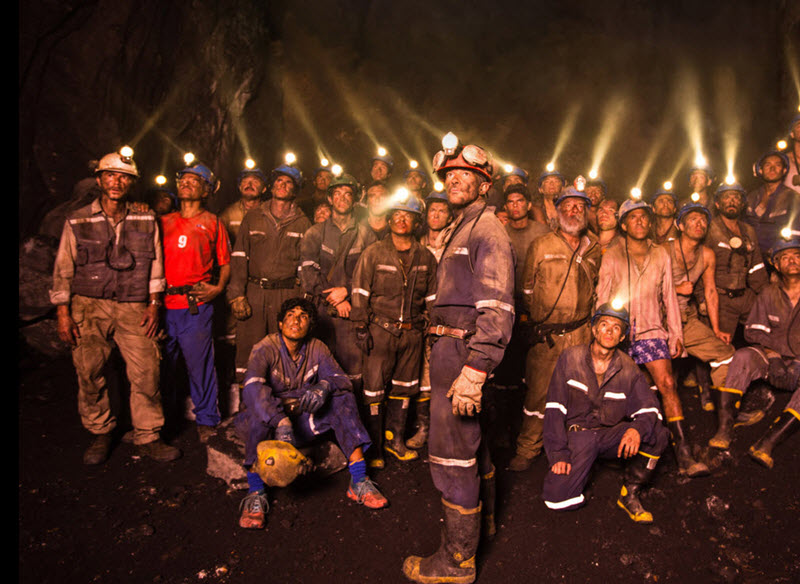

I seem to remember how thankful they were to God and how much they credited Him and their faith for giving them hope, strength, and getting them through. More of that could have been portrayed, but enough was included to emphasize it. Very well done. It also shows teamwork and leadership, above and below; how people came together to overcome each days challenges and the difference individuals can make.
“The 33” embodies Hope and how God can and does use impossible situations for a greater good we can not comprehend while it is happening—to touch the people going through it and to inspire and reach others through their testimony. Psalms 95:4 and 71:20.
My Ratings: Moral rating: Good / Moviemaking quality: 4½